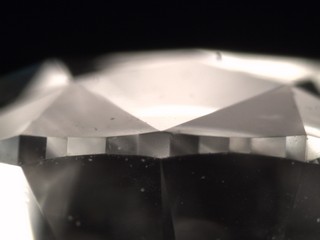Faceted Girdle in a Diamond
A faceted girdle in a diamond refers to a girdle that has been polished and cut into small facets, rather than left rough or bruted. This technique enhances the diamond’s overall appearance, improves light performance, and contributes to a higher symmetry grade.
What is the Girdle?
The girdle is the outer edge of a diamond, separating the crown (top) from the pavilion (bottom). It can vary in thickness and finish, impacting both durability and light reflection.
Types of Girdles in Diamonds
Girdle Type Description Common in
Faceted Girdle Polished with small, flat surfaces (facets) to enhance brilliance. High-quality diamonds, modern cuts.
Bruted Girdle Unpolished, frosted appearance, created using traditional bruting techniques. Older-cut diamonds, some industrial diamonds.
Polished Girdle Smooth, highly polished, without facets. Step-cut diamonds (Emerald, Asscher).
Benefits of a Faceted Girdle
Improves Light Performance – Helps reduce light leakage by allowing better refraction.
Enhances Symmetry & Proportions – Adds precision to the diamond’s cut.
Eliminates a Frosty Look – Unlike bruted girdles, faceted girdles appear more refined and modern.
Common in High-Quality Diamonds – Many GIA, DCLA, and IGI-certified diamonds feature faceted girdles.
Does a Faceted Girdle Affect Value?
A faceted girdle does not significantly change a diamond’s value but contributes to its overall aesthetic appeal and symmetry rating. It is often preferred in Round Brilliant, Cushion, and Oval diamonds, while step-cut diamonds like Emerald and Asscher may have a polished girdle instead.
